Digital Signage vs. Traditional Posters: Which Brings Better ROI?
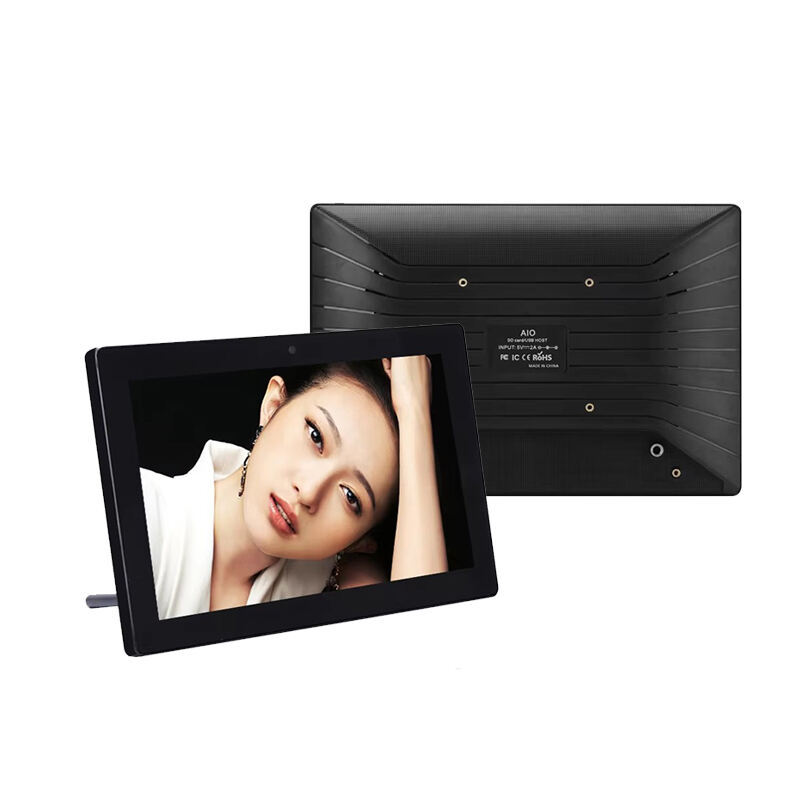
The Shift from Paper to Pixels
In the age of digital transformation, even the simplest tools of communication — posters, menus, and billboards — are being reimagined. Traditional printed posters, once the backbone of retail and corporate advertising, are losing ground to digital signage and advertising display tablets. These digital tools not only modernize visual communication but also offer data-driven insights and dynamic content management that static prints simply cannot deliver.
According to a 2024 Statista report, global spending on digital signage is expected to exceed $45 billion by 2026, driven by retail, hospitality, and transportation sectors adopting smart advertising screens for real-time engagement. The question facing many businesses today is no longer if they should go digital, but how fast they can make the transition.
The Limitations of Traditional Posters
For decades, printed posters have been the go-to method for promoting new products, sales events, and brand messages. They are inexpensive to produce and easy to distribute. Yet, they come with significant limitations in flexibility and impact.
Printed materials require design approval, physical printing, logistics, and manual replacement — processes that can take days or even weeks. If a retail store needs to adjust pricing, or a café wants to promote a daily special, the delay between idea and display creates lost opportunities. Additionally, printed posters are static; they cannot adapt to audience demographics, time of day, or seasonal trends. Over time, they also fade, tear, or become outdated, reducing the overall professionalism of the brand image.
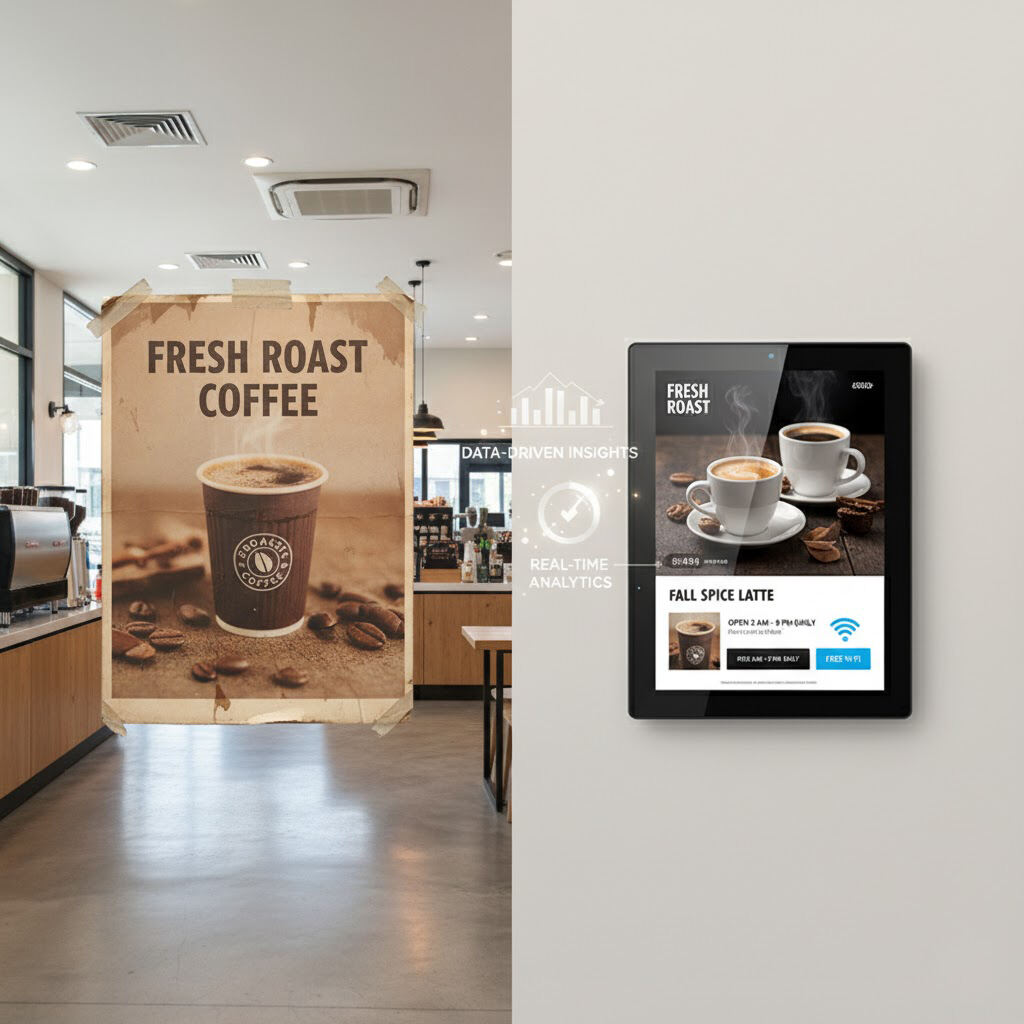
The Rise of the Advertising Display Tablet
Enter the advertising display tablet — a compact, network-connected digital display that allows enterprises to manage and update content remotely in real time. Unlike LED billboards that require specialized installation, display tablets are lightweight and versatile, making them ideal for retail digital display applications, restaurant menus, and indoor promotions.
These commercial tablets typically feature high-definition touch screens, built-in media players, and Wi-Fi or 4G connectivity. Content can be managed through cloud-based software, enabling marketing teams to schedule campaigns, run dynamic video ads, and analyze audience engagement without stepping foot into the store. This instant control represents a fundamental shift from static advertising to interactive storytelling.
Comparing Costs: Print vs. Digital
At first glance, traditional posters may seem cheaper, but when total cost of ownership is considered, digital signage often delivers better ROI. Printed posters require recurring expenses for printing, shipping, and installation — costs that multiply with each update. By contrast, smart advertising screens are a one-time investment with ongoing software management that allows unlimited content updates.
For example, a retail chain spending $5,000 annually on printed marketing materials could replace them with advertising tablets for roughly the same initial cost but gain the ability to update content daily at no extra expense. Over a two-year period, digital displays typically reduce campaign costs by up to 60% while increasing conversion rates due to higher customer engagement.
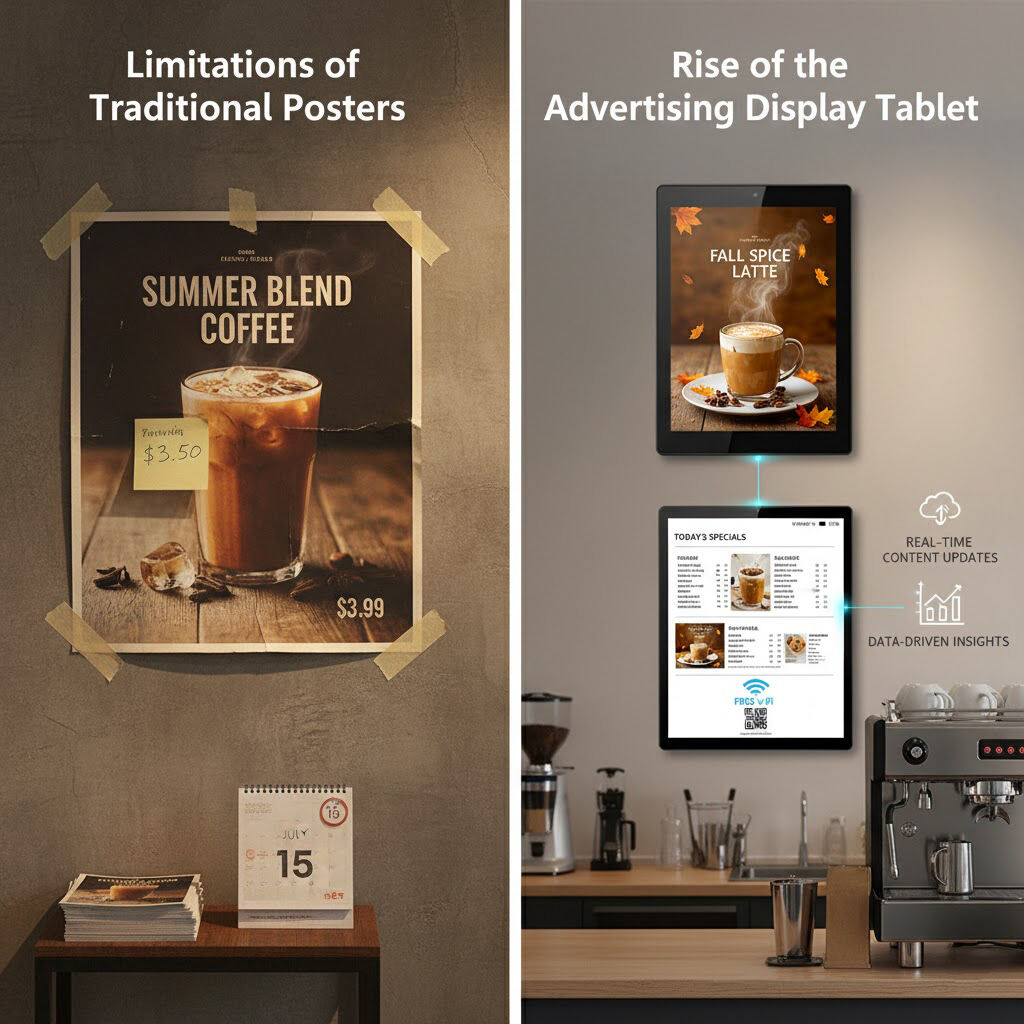
Engagement and Interactivity: The Power of Motion
The human brain processes visual information 60,000 times faster than text, and motion naturally draws attention. This is where digital signage outperforms static posters by a wide margin. Advertising display tablets can display animated graphics, video loops, and even interactive product catalogs.
In retail settings, these screens can respond to touch input, enabling customers to browse options, scan QR codes, or view personalized recommendations. In restaurants, they serve as dynamic menus that automatically update with availability or promotional items. This level of interactivity not only boosts customer engagement but also generates behavioral data for analysis — something paper posters could never offer.
Real-World Applications: Smarter Retail and Beyond
The retail sector has been the primary driver behind the adoption of digital advertising tablets. From fashion boutiques to supermarkets, brands are using these displays to create immersive shopping experiences. A clothing retailer, for example, might install smart advertising screens near fitting rooms to showcase new arrivals or style suggestions. Meanwhile, a quick-service restaurant could use digital menu boards powered by commercial display tablets to adjust pricing during peak hours or highlight combo meals in real time.
Outside retail, digital signage tablets are increasingly used in healthcare, transportation, and corporate environments — displaying announcements, wayfinding information, or digital directories. Their versatility and compact form factor make them suitable for virtually any industry looking to modernize communication.
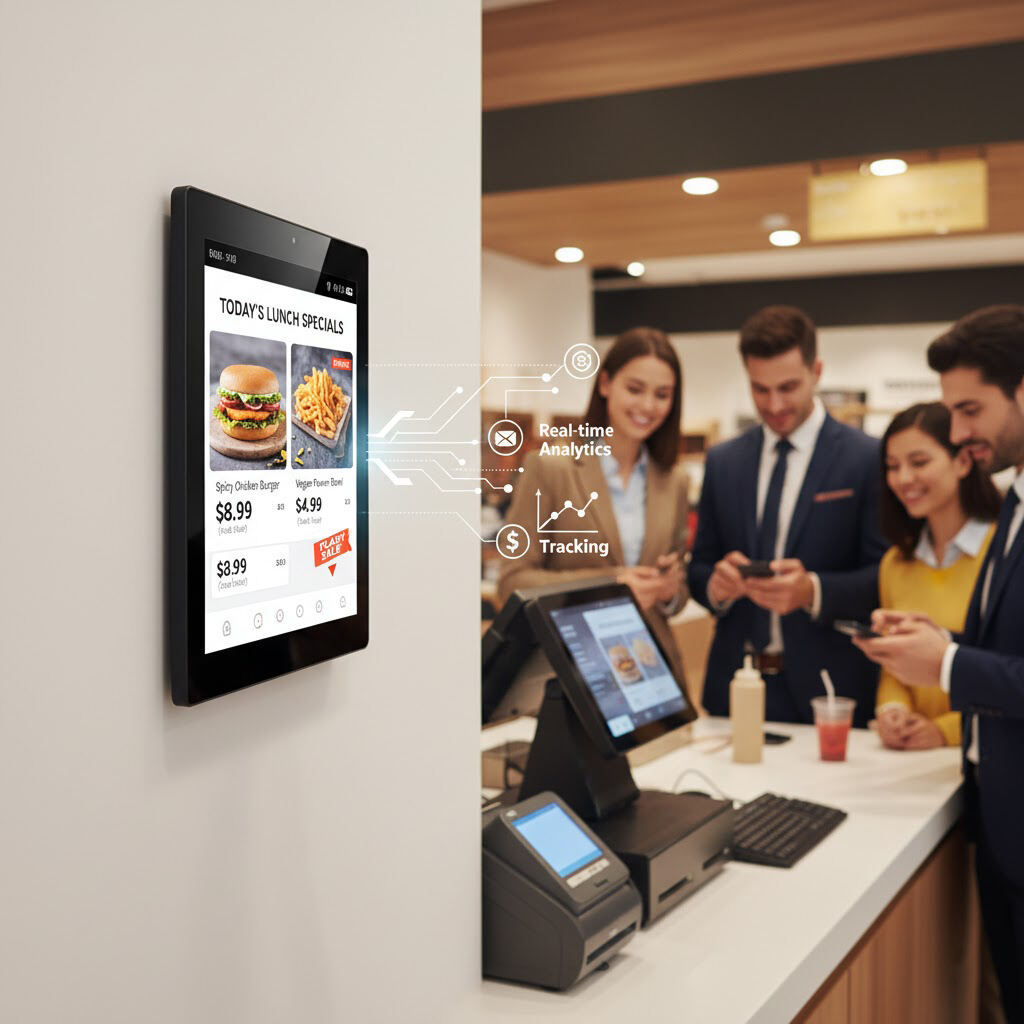
Measuring ROI with Data and Analytics
One of the strongest advantages of digital signage systems lies in measurability. Traditional posters provide no insight into effectiveness — there’s no way to know how many people saw or responded to an ad. In contrast, advertising display tablets often come with analytics dashboards that track impressions, dwell time, and interaction rates.
These insights allow marketing teams to fine-tune content, optimize schedules, and test A/B variations to maximize return on investment. Over time, this data-driven approach transforms advertising from a creative guessing game into a measurable performance tool.
Sustainability and Environmental Impact
Beyond financial ROI, digital signage tablets contribute to sustainability by reducing paper waste and printing emissions. The average retail chain prints thousands of posters each year, many of which end up discarded after short-term campaigns. Transitioning to retail digital displays significantly lowers environmental impact and aligns with growing corporate ESG goals.
Moreover, modern commercial tablets are energy-efficient, often equipped with automatic brightness adjustment and scheduling features that minimize power consumption during off-hours. For companies pursuing green certifications or carbon neutrality, adopting digital signage is a step toward more responsible operations.
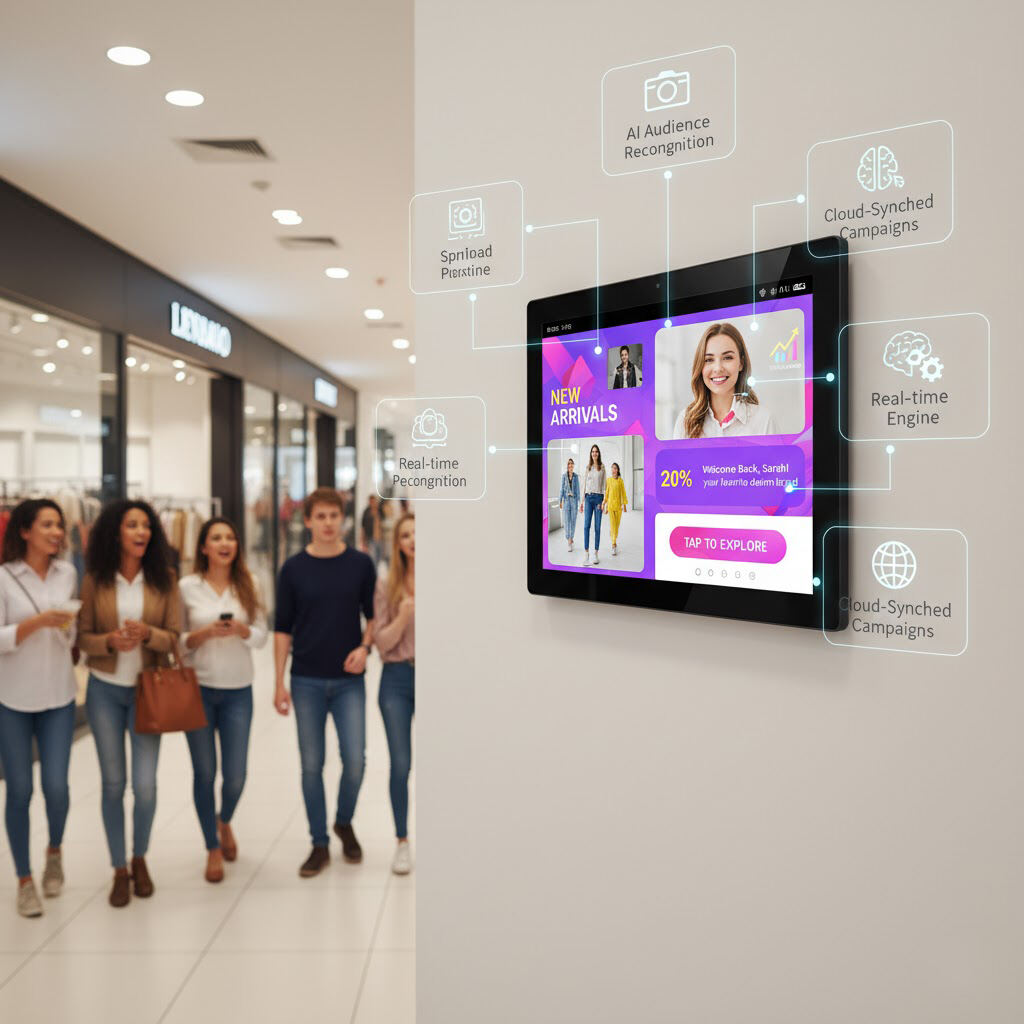
Future Outlook: Smarter Content, Smarter Decisions
The next wave of digital advertising screens will move beyond static playlists toward AI-driven personalization. By integrating with customer analytics systems, future advertising tablets could automatically display targeted messages based on audience demographics, store traffic, or time of day.
In the near future, retailers may deploy AI-powered digital signage capable of recognizing returning customers, adjusting promotions dynamically, or synchronizing campaigns across multiple locations. This convergence of artificial intelligence, cloud computing, and interactive display technology represents the future of smart retail environments.
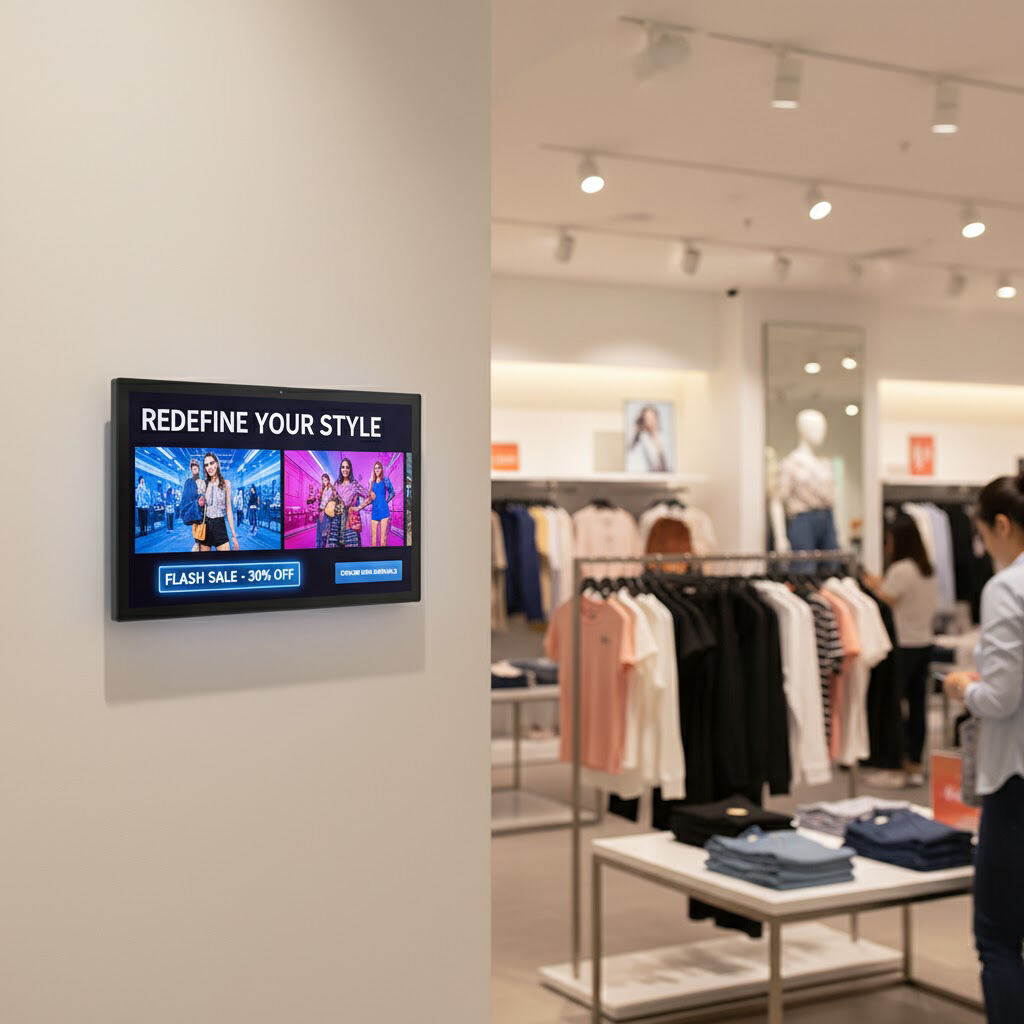
Rethinking Visual Communication for the Digital Era
The debate between digital signage and traditional posters is not merely about replacing one medium with another — it’s about redefining how brands communicate visually. Advertising display tablets bring agility, data insight, and environmental responsibility into the world of marketing, turning once-static spaces into living, responsive platforms for storytelling.
As enterprises navigate the digital transformation of physical environments, those that embrace dynamic visual communication will find not only better ROI but also deeper customer engagement and stronger brand consistency. In the end, it’s clear that the future of advertising belongs to those who think — and display — digitally

